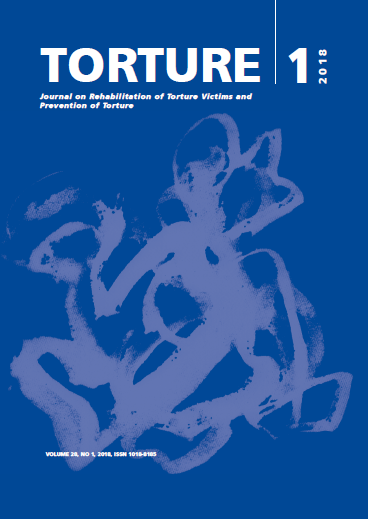Factor interaction in prevention of torture Reflections based on Carver and Handley’s research (with Comment by the authors of the book and Response by the author of the paper)
DOI:
https://doi.org/10.7146/torture.v28i1.105481Keywords:
Torture, ill-treatment, prevention, factors of prevention, interaction, quality, best practice, new model, political willAbstract
Summary
“Does torture prevention work?” is a very comprehensive book based on commendably profound research in 16 countries. It contains a wealth of very important results concerning the relationship between a multitude of factors in the prevention and occurrence of torture. However, the results described may be interpreted in a manner different to how it was done in the book. The intention of this paper is to draw attention to some challenges in the research design and to give a broader view of the complexity of torture prevention. The book: The authors have identified a host of preventive factors, organised them in clusters (detention law and practice; prosecution (of torturers) law and practice; complaint law and practice; and, monitoring law and practice), and scored them according to whether they fulfil international standards. A torture score comprising frequency, geographical spread and severity of torture was constructed (CHATS). Ill-treatment was excluded. Correlations between preventive factors, clusters and CHATS were calculated. However, the interrelationship between various factors and clusters was not analysed. The main findings included that detention practice had the strongest (negative) correlation to torture and that the torture scoring, pooled for all countries, declined during the study period (1985-2014). Comment: For several reasons, distinguishing ‘more severe torture’ from ‘torture’ is problematic. Excluding illtreatment in the research is also problematic because the border between the two may be blurred and difficult to interpret and it may be manipulated by authorities, leading to falsely low torture incidence. The pooling of data of diverse quality may hide outstanding prevention results. Identification and implementation of best practices is recommended. Preventive means implemented with low quality may give legitimacy to practices in torturing detentions. The quality of preventive actions is key to efficiency. Factors and clusters of preventive means interact in synergy making each other fully effective. A new model for torture prevention is proposed, which emphasises that all preventive means interact together with transparency, lack of corruption and reprisals, forming the practices in detention where torture takes place. The political will to prevent torture is a key factor.
Downloads
Published
How to Cite
Issue
Section
License
We accept that some authors (e.g. government employees in some countries) are unable to transfer copyright. The Creative Commons Licence Attribution-NonCommercial-NoDerivatives 4.0 International (CC BY-NC-ND 4.0) covers both the Torture Journal and the IRCT web site. The publisher will not put any limitation on the personal freedom of the author to use material contained in the paper in other works which may be published, provided that acknowledgement is made to the original place of publication.


